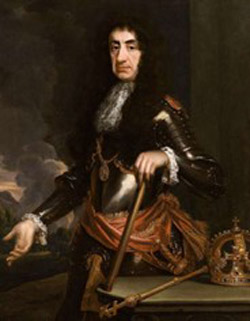In the year 1660, Charles II was restored to the throne following the English Civil War and the Interregnum under Oliver Cromwell. At the time, it was estimated
It was proposed that a tax based on the number of hearths (fireplaces) in a household would be more acceptable to the population than a specific tax upon the individual. In March 1662 Parliament passed a Bill to tax each hearth in every household by 1 shilling, payable every September and March (2 shillings per hearth per year). In that year in Southam, with a population of 525, there were 73 properties chargeable to the new tax and 32 properties that were non-chargeable.
The parish constables were made responsible for collecting the money. They were expected to identify every householder and agree with them the number of hearths liable for taxing. Those details were then reported to the Justices’ quarter sessions, with a list of names and hearths.
The measure had to be amended to ensure that the poor were not over-burdened with another tax. They were provided with ‘exemption certificates’ that had to be signed by either the church minister, churchwarden or overseer of the poor and by two Justices of the Peace. However, by 1664 any household with two or more hearths was liable to pay the tax. The system remained in operation until 1689.
As would be expected, the hearth tax was resented, particularly as local constables had the legal authority to enter and inspect all properties. At the tax’s repeal in Parliament in 1689, opponents of the measure claimed it was:
‘…not only a great oppression to the poorer sort, but a badge of slavery upon the whole people, exposing every man’s house to be entered into and searched at pleasure, by persons unknown to him…’
In relation to Southam, the official records of 1670 stored at Warwickshire County Records Office are comprehensive. The report to the quarter sessions by Constable Thomas Chetwin recorded 83 properties chargeable and 57 non-chargeable, a total of 140 households (a change from 1662). Broken down this included 199 hearths in chargeable properties. The properties with four hearths or more included those of Richard Bicknall, with a forge (7), Robert Hanslap and Thomas Crofter (8), the widow Lynden (with two houses) 10, and Robert Edmunds (gent) 4.
The non-chargeable properties included those owned by John Turner and Robert Hill, although both had forges. There were 16 properties owned by widows, 8 chargeable and 8 non-chargeable. There were also 7 empty properties that were chargeable although no-one was living in them.
Finally, it is of interest to note that by the repeal of the law in 1689, of the £1,800,000 raised in taxes, £200,000 was raised through the Hearth Tax. Alas for citizens, the Window Tax and Land Tax were to follow; there was no escape!
Southam Heritage Collection is located in the atrium of Tithe Place opposite the Library entrance. Opening times Tuesday, Thursday, Friday and Saturday mornings from 10am to 12 noon. To find out more about Southam’s history, visit our website www.southamheritage.org telephone 01926 613503 or email southamheritage@hotmail.com You can also follow us on Facebook.

Leave A Comment